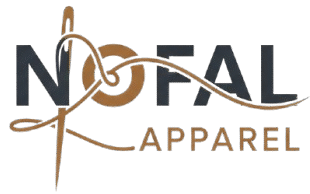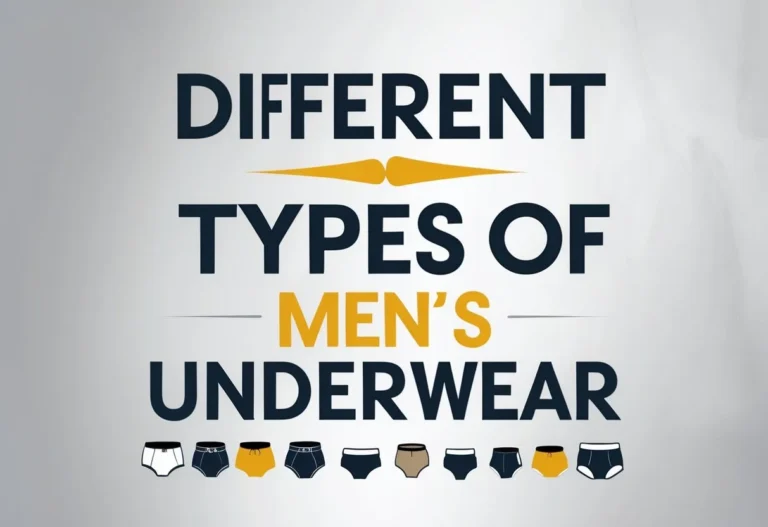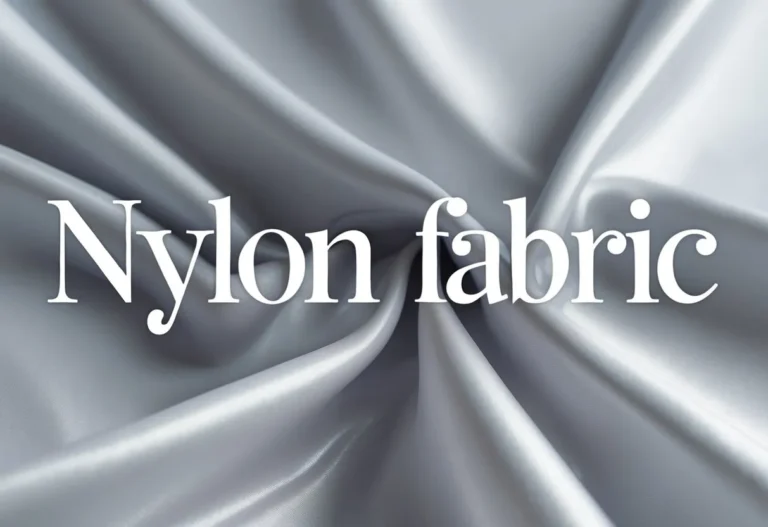Sportswear continues to evolve as both fashion and function become more important to consumers. The market is moving toward clothing that supports performance while fitting daily lifestyle needs.
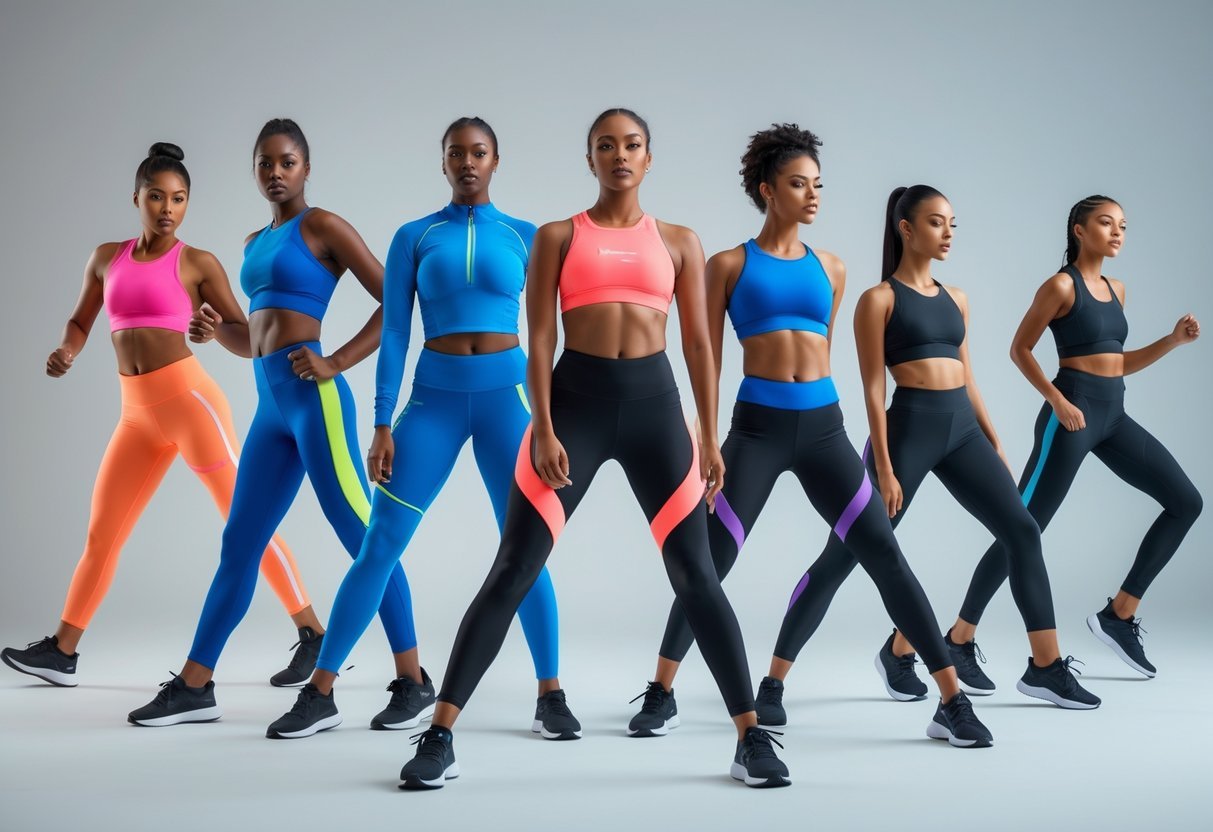
The hottest sportswear trends to watch in 2025 reflect changes in technology, style, and sustainability, shaping how people dress for fitness and everyday activities. These trends highlight the balance between practicality and modern design, offering options that suit different preferences and needs.
1) Sustainable Fabrics
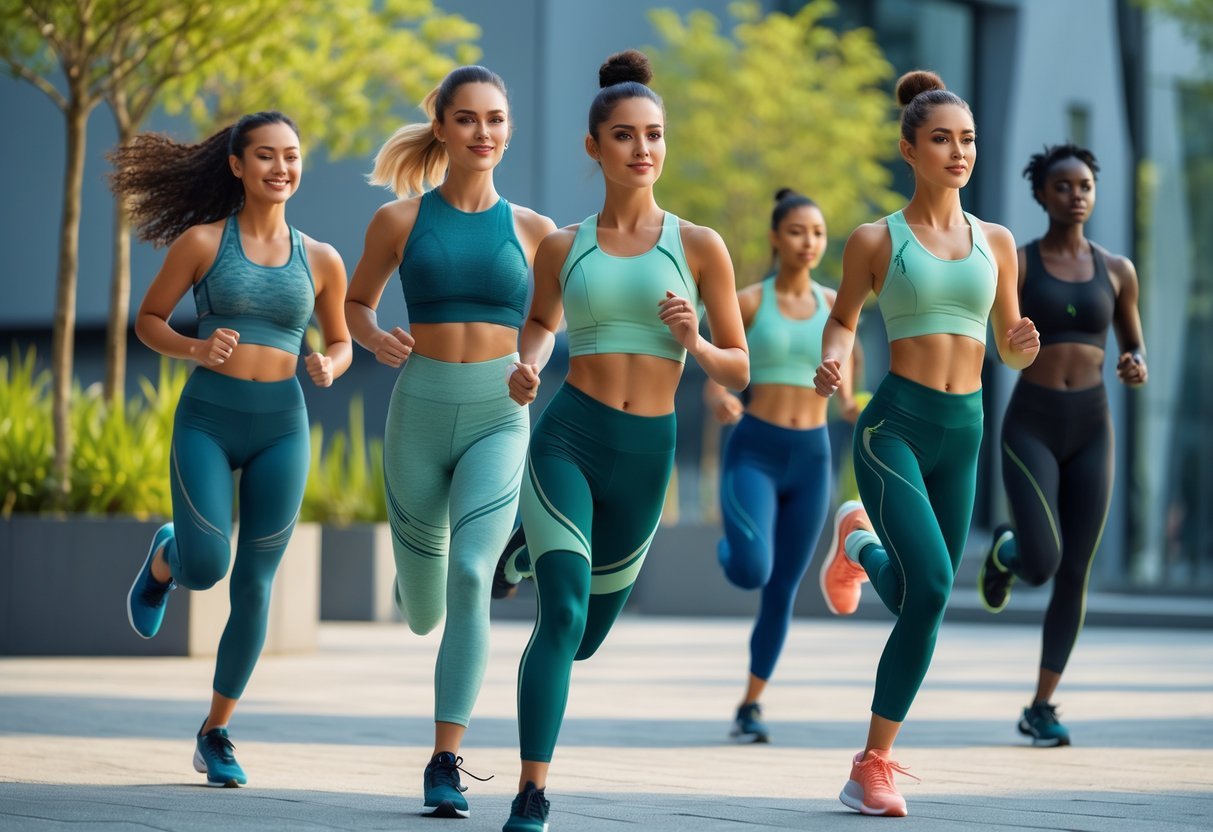
Sustainable fabrics are a key trend in sportswear for 2025. Brands are using recycled polyester, organic cotton, and biodegradable materials to reduce environmental impact. These fabrics help lower waste and pollution while still offering good performance.
Many companies focus on creating sportswear that lasts longer. This reduces the need to replace items often, which saves resources. Sustainable fabrics often include new technologies to keep clothes lightweight and breathable.
There is a growing demand for transparency in fabric sourcing. Consumers want to know where materials come from and how they are made. This leads brands to adopt traceability systems that prove their eco-friendly claims.
Sustainability in fabrics goes beyond environmental benefits. It also supports social responsibility by improving working conditions in supply chains. Overall, the use of sustainable fabrics is shaping the future of sportswear.
2) Tech-Integrated Activewear

Tech-integrated activewear is changing how people train and stay comfortable. Clothing now often includes smart fabrics that monitor body temperature and moisture. This helps athletes keep cool and dry during workouts.
Some activewear features built-in sensors to track movement and performance. This data can be used to improve training routines. It also allows for better injury prevention.
Materials with stretch and breathability are combined with these technologies. This makes the clothing both functional and comfortable for daily wear.
Brands are also exploring charging capabilities and wireless connectivity in activewear. These features enable easy syncing with devices like smartphones or fitness trackers.
In 2025, tech-integrated activewear is not just for serious athletes. It is becoming common for anyone who wants better comfort and feedback from their workout clothes. This trend makes activewear smarter and more adaptable to individual needs.
3) Oversized Silhouettes
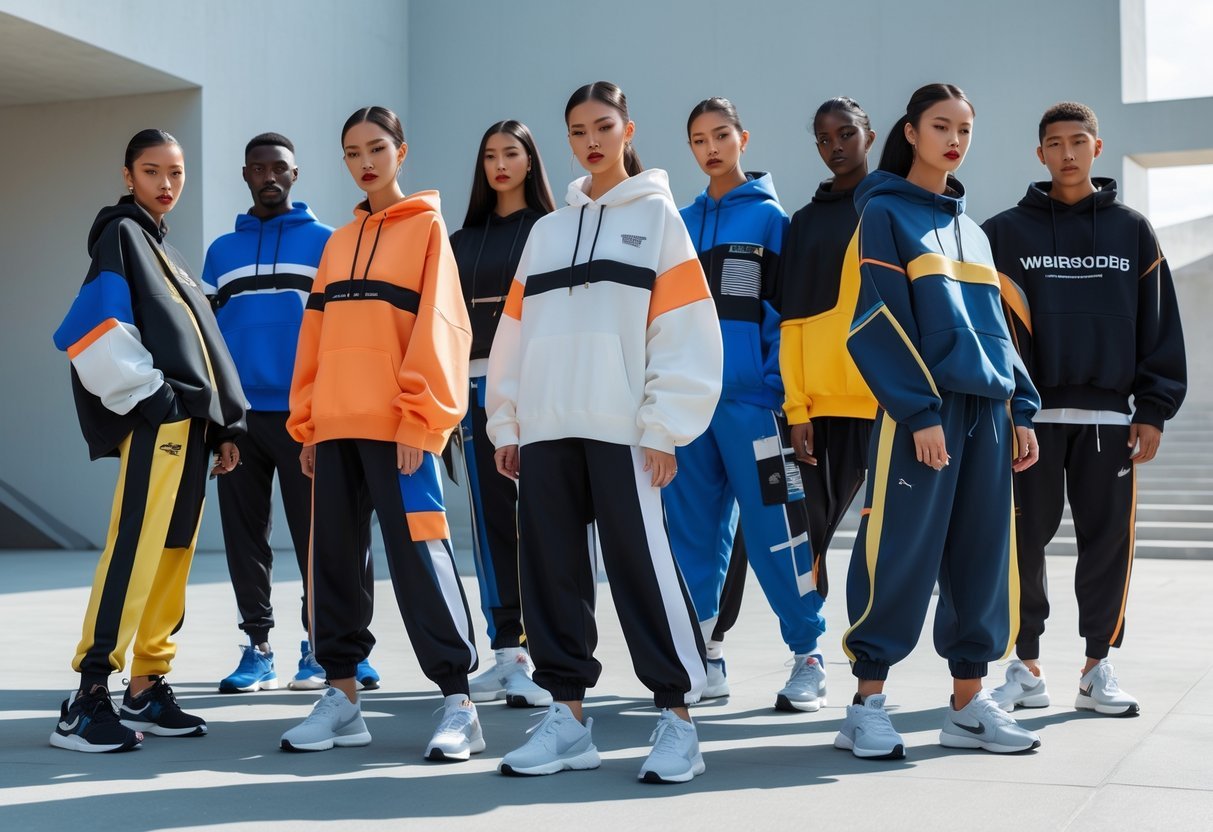
Oversized silhouettes are a key trend in sportswear for 2025. Clothing pieces like jerseys, jackets, and sweatshirts are designed with relaxed, loose fits. This style offers more comfort and freedom of movement.
The oversized look blends athletic wear with street fashion. It moves beyond the gym and is now popular in everyday wear. Many brands focus on creating pieces that feel both stylish and easy to wear.
This trend often features longer hemlines and wider cuts. It suits various body types and supports layering, making it practical for different seasons. The oversized style also reflects a casual, laid-back attitude without sacrificing function.
4) Gender-Fluid Styles
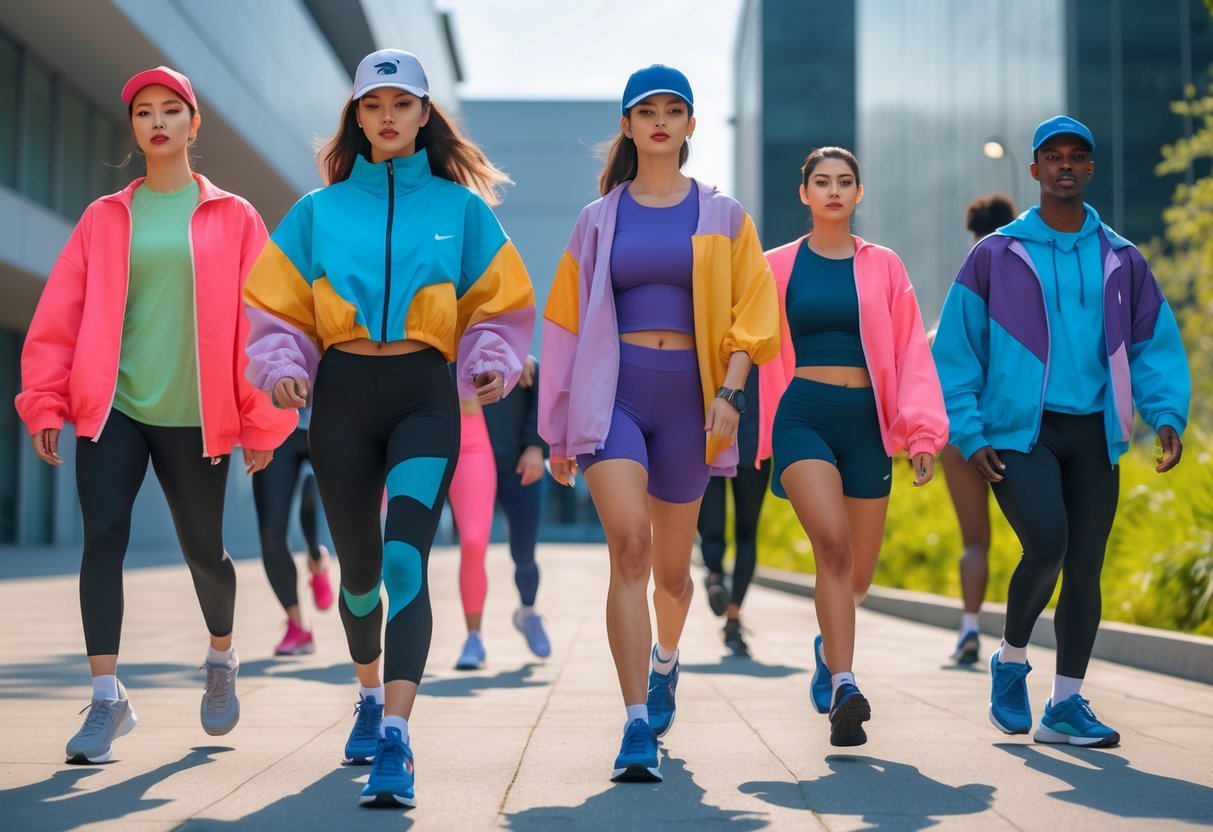
Gender-fluid sportswear breaks down the usual lines between men’s and women’s clothing. It offers designs that anyone can wear, no matter their gender identity. This style focuses on comfort and personal choice.
Clothing in this trend often features loose fits and neutral colors. The idea is to create pieces that feel good and look good on all bodies. This makes it easier for people to express themselves without feeling limited by traditional labels.
Brands are making more pieces that mix elements from different gender styles. For example, a jacket may have a cut usually seen in men’s wear but with colors or details often used in women’s lines. This blend supports inclusivity and versatility in sportswear.
The trend reflects a wider social shift toward accepting diverse identities. It also encourages consumers to choose clothes based on their needs and style preferences rather than old fashion rules. This change is expected to continue shaping sportswear in 2025 and beyond.
5) Bold Color Blocking
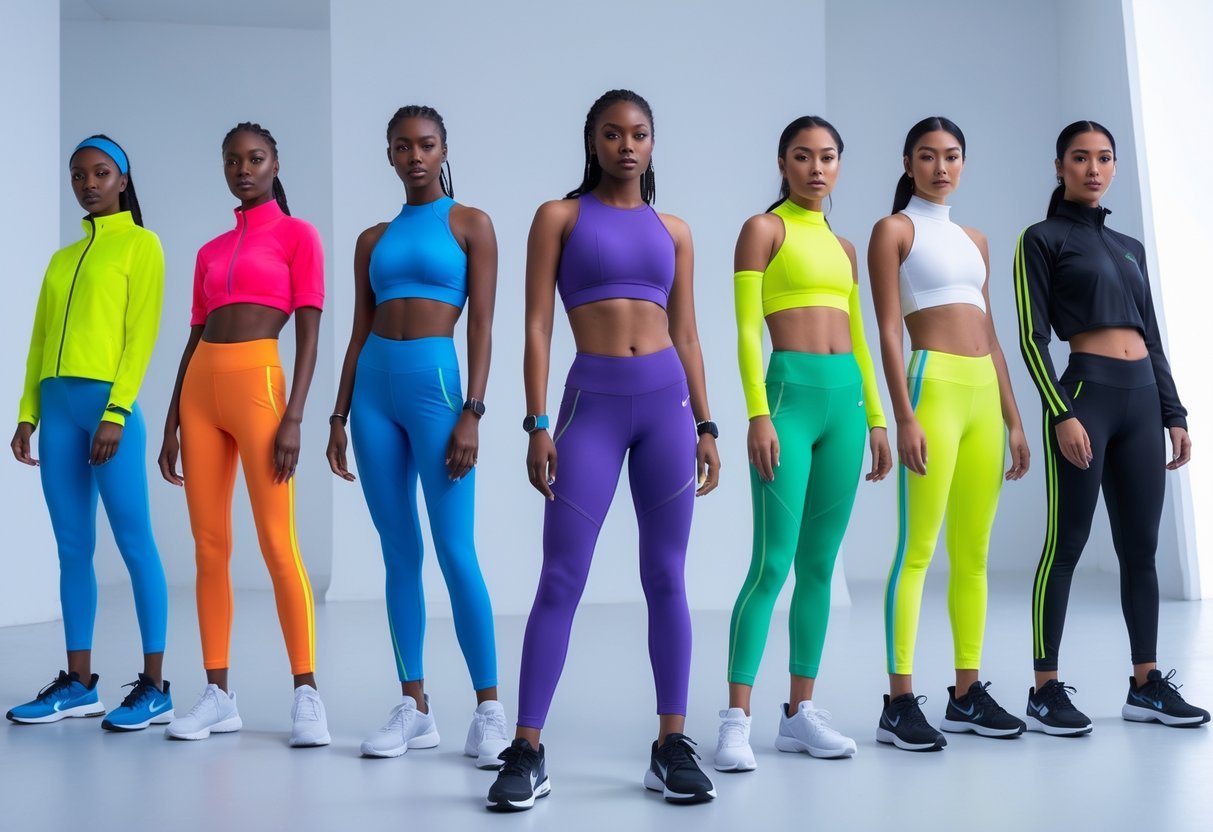
Bold color blocking is a key trend in sportswear for 2025. It uses bright, contrasting colors placed in blocks or geometric shapes to create a strong visual impact.
This style adds energy and personality to activewear. Pieces often combine rich shades like cobalt blue, burgundy, and sunset orange.
Color blocking helps wearers stand out during workouts or casual wear. It also reflects a shift away from traditional neutral colors toward more vibrant, expressive looks.
Designers use this technique to showcase creativity while maintaining function. It supports the idea that sportswear can be both practical and fashionable.
Overall, bold color blocking is a popular way to refresh sportswear collections. It suits those who want to add color and style to their fitness routines.
6) Seamless Construction
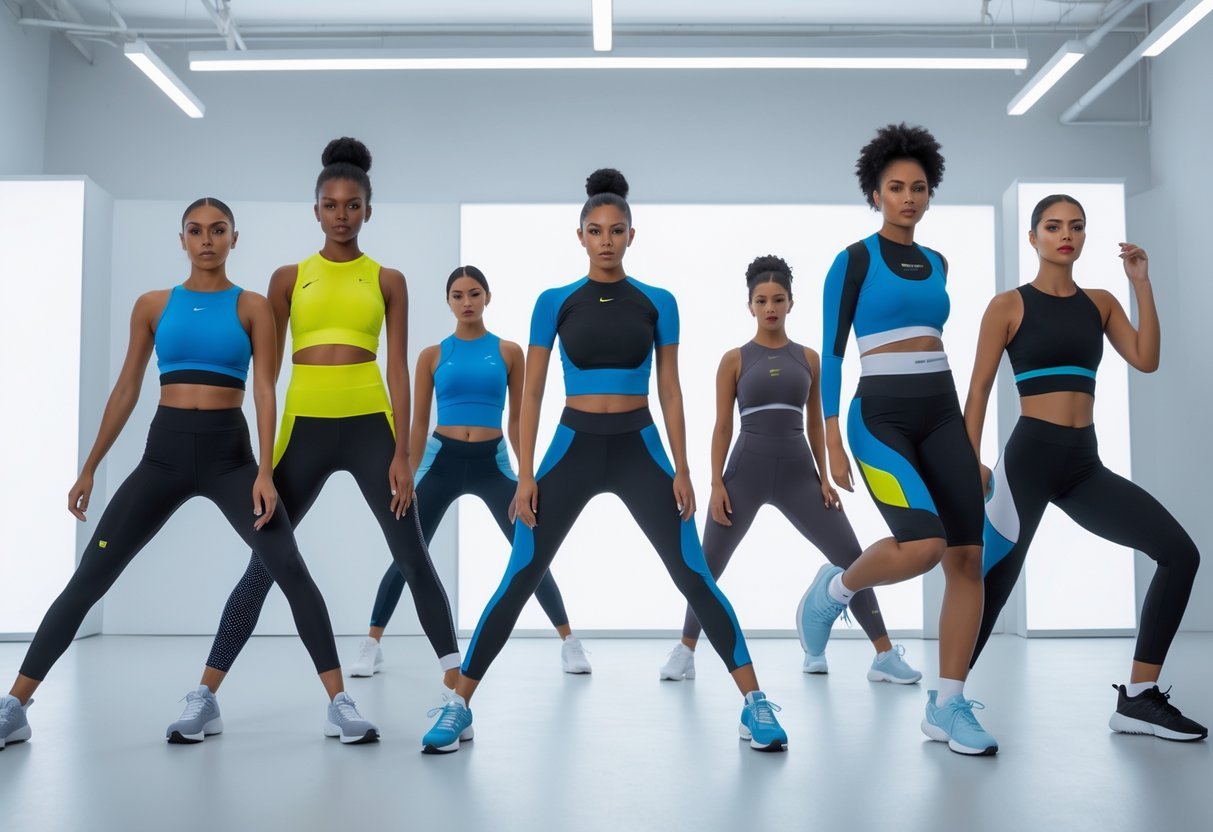
Seamless construction is growing in popularity for sportswear in 2025. It uses advanced knitting techniques to create garments without traditional seams. This reduces irritation and chafing during movement.
The design also improves fit and flexibility. Without seams, the clothing can stretch more naturally with the body. This makes it comfortable for both high-intensity workouts and casual wear.
Another benefit is durability. Seamless garments tend to hold their shape better after repeated use. They also offer a cleaner, more streamlined look that appeals to many consumers.
Brands focus on seamless construction to combine style and performance. It supports moisture-wicking and breathability, key features in modern activewear. Overall, seamless sportswear meets the demand for comfort, function, and sleek design.
7) Smart Temperature-Regulating Fabrics

Smart temperature-regulating fabrics are changing how athletes stay comfortable during workouts. These fabrics adjust to the body’s needs by cooling down or warming up depending on the environment.
They use advanced materials like phase-change materials and infrared textiles. These fabrics help keep body temperature balanced, reducing the risk of overheating or getting too cold.
Many brands focus on making these fabrics eco-friendly. This means they not only perform well but also reduce environmental impact.
The fabrics often include moisture-wicking and anti-microbial properties. These features help keep the wearer dry and fresh during physical activity.
Smart fabrics are now common in winter sportswear, outdoor gear, and everyday activewear. They improve comfort, support, and can even help reduce muscle fatigue.
Temperature regulation is a key feature to look for in 2025 sportswear. It makes workouts more enjoyable and helps maintain better performance throughout the year.
How Technology Is Shaping 2025 Sportswear
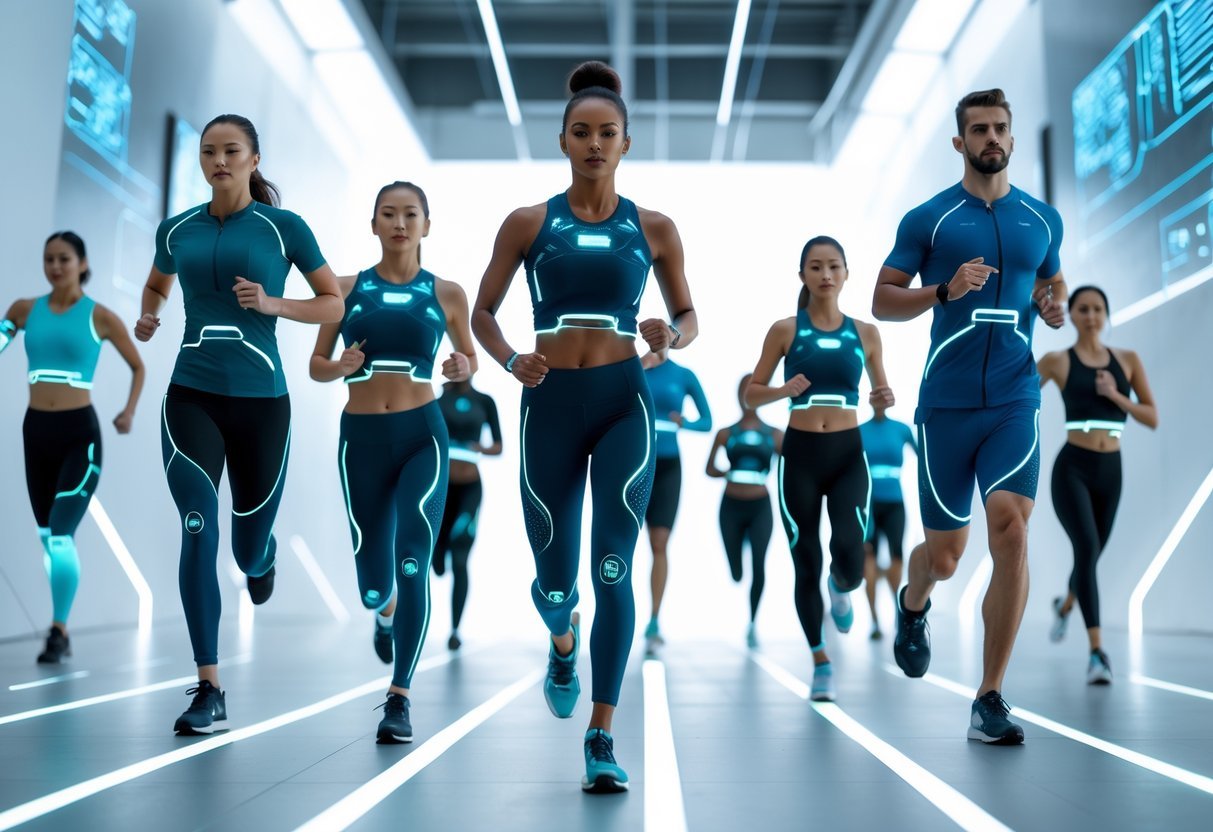
Sportswear in 2025 combines new fabrics and smart features to improve comfort and performance. Advances in material science and electronics are making activewear more durable, adaptable, and user-friendly.
Innovative Fabrics and Materials
Sportswear now uses eco-friendly fabrics that are lightweight and strong. These materials often include recycled fibers or bio-based textiles, which reduce environmental impact without sacrificing quality.
Many fabrics have built-in temperature regulation. They can wick away sweat efficiently and keep the body cool or warm as needed. Seamless construction is common, offering better fit and less irritation during movement.
Compression knits are also popular. They support muscles, reduce fatigue, and improve blood circulation while maintaining stretch and breathability.
Wearable Tech Integration
Activewear includes smart sensors and electronics embedded into the fabric or accessories. These devices track heart rate, movement, and calories burned in real time.
Some clothing pieces adjust automatically to temperature or hydration levels. For example, fabrics can open tiny pores in hot conditions or tighten fibers when the wearer gets cold.
Wearable tech also aids in injury prevention. Sensors can detect unusual movement or stress patterns, alerting the user to avoid strain or damage.
Together, these technologies make sportswear multifunctional and highly personalized.
Sustainability Initiatives in Sportswear

Sportswear brands are increasingly focused on lowering environmental impact. They invest in cleaner production methods and respond to buyer interest in eco-conscious products.
Eco-Friendly Manufacturing Processes
Many companies use recycled materials, such as plastic bottles turned into fabric, to reduce waste. Biodegradable fibers and organic cotton replace traditional options that strain natural resources.
Factories are adopting water-saving techniques and reducing harmful chemical use. Some brands implement closed-loop systems that recycle water and materials. This helps to cut pollution and conserve energy.
Transparency on sourcing and production encourages brands to maintain environmentally friendly standards. Certifications like OEKO-TEX and GOTS signal safer, sustainable fabrics to consumers.
Consumer Demand for Green Choices
Buyers increasingly prefer sportswear that supports sustainability. Studies show that most shoppers consider environmental impact before purchase.
This demand pushes brands to offer clear information on product origin and material makeup. Labels highlighting recycled content and manufacturing ethics become key selling points.
Athletes and lifestyle consumers alike seek versatile gear that aligns with their values. Offering eco-friendly options can build brand loyalty and attract new customers looking for responsible products.
Frequently Asked Question
What are the emerging trends in women’s activewear for 2025?
Women’s activewear is embracing oversized silhouettes that offer comfort and freedom of movement. Bold color blocking is popular, creating eye-catching designs that also enhance style. Gender-fluid styles are breaking traditional norms, providing more inclusive options.
How is men’s sportswear expected to evolve in design and technology by 2025?
Men’s sportswear will include more tech-integrated fabrics that enhance performance by regulating temperature and improving breathability. Designs are moving toward a mix of functionality and fashion, including oversized fits and streetwear influences.
What are some sustainable practices influencing sportswear manufacturing in 2025?
Sustainable fabrics made from recycled or natural materials are becoming the norm. Brands are also focusing on reducing waste through better production processes and offering transparent supply chains to track the impact of their products.
Which materials are proving most popular for high-performance activewear in 2025?
Materials like seamless compression knits and eco-friendly fabrics are widely used. These fabrics provide moisture-wicking, flexibility, and durability while supporting sustainability goals. Smart fabrics that respond to body temperature are also gaining popularity.
How is the sportswear market adapting to changes in consumer behavior by 2025?
The market is expanding size ranges and gender-neutral cuts to be more inclusive. Consumers want versatile apparel that works for both fitness and everyday wear, encouraging brands to design athleisure styles that double as streetwear.
What innovations in fitness apparel technology can we expect to see in 2025?
Fitness apparel will include smart fabrics that regulate body temperature and monitor movement. Traceability technology will allow consumers to verify the sustainability and origin of their gear, adding transparency to the shopping experience.
Sportswear continues to evolve as both fashion and function become more important to consumers. The market is moving toward clothing that supports performance while fitting daily lifestyle needs.

The hottest sportswear trends to watch in 2025 reflect changes in technology, style, and sustainability, shaping how people dress for fitness and everyday activities. These trends highlight the balance between practicality and modern design, offering options that suit different preferences and needs.
1) Sustainable Fabrics

Sustainable fabrics are a key trend in sportswear for 2025. Brands are using recycled polyester, organic cotton, and biodegradable materials to reduce environmental impact. These fabrics help lower waste and pollution while still offering good performance.
Many companies focus on creating sportswear that lasts longer. This reduces the need to replace items often, which saves resources. Sustainable fabrics often include new technologies to keep clothes lightweight and breathable.
There is a growing demand for transparency in fabric sourcing. Consumers want to know where materials come from and how they are made. This leads brands to adopt traceability systems that prove their eco-friendly claims.
Sustainability in fabrics goes beyond environmental benefits. It also supports social responsibility by improving working conditions in supply chains. Overall, the use of sustainable fabrics is shaping the future of sportswear.
2) Tech-Integrated Activewear

Tech-integrated activewear is changing how people train and stay comfortable. Clothing now often includes smart fabrics that monitor body temperature and moisture. This helps athletes keep cool and dry during workouts.
Some activewear features built-in sensors to track movement and performance. This data can be used to improve training routines. It also allows for better injury prevention.
Materials with stretch and breathability are combined with these technologies. This makes the clothing both functional and comfortable for daily wear.
Brands are also exploring charging capabilities and wireless connectivity in activewear. These features enable easy syncing with devices like smartphones or fitness trackers.
In 2025, tech-integrated activewear is not just for serious athletes. It is becoming common for anyone who wants better comfort and feedback from their workout clothes. This trend makes activewear smarter and more adaptable to individual needs.
3) Oversized Silhouettes

Oversized silhouettes are a key trend in sportswear for 2025. Clothing pieces like jerseys, jackets, and sweatshirts are designed with relaxed, loose fits. This style offers more comfort and freedom of movement.
The oversized look blends athletic wear with street fashion. It moves beyond the gym and is now popular in everyday wear. Many brands focus on creating pieces that feel both stylish and easy to wear.
This trend often features longer hemlines and wider cuts. It suits various body types and supports layering, making it practical for different seasons. The oversized style also reflects a casual, laid-back attitude without sacrificing function.
4) Gender-Fluid Styles

Gender-fluid sportswear breaks down the usual lines between men’s and women’s clothing. It offers designs that anyone can wear, no matter their gender identity. This style focuses on comfort and personal choice.
Clothing in this trend often features loose fits and neutral colors. The idea is to create pieces that feel good and look good on all bodies. This makes it easier for people to express themselves without feeling limited by traditional labels.
Brands are making more pieces that mix elements from different gender styles. For example, a jacket may have a cut usually seen in men’s wear but with colors or details often used in women’s lines. This blend supports inclusivity and versatility in sportswear.
The trend reflects a wider social shift toward accepting diverse identities. It also encourages consumers to choose clothes based on their needs and style preferences rather than old fashion rules. This change is expected to continue shaping sportswear in 2025 and beyond.
5) Bold Color Blocking

Bold color blocking is a key trend in sportswear for 2025. It uses bright, contrasting colors placed in blocks or geometric shapes to create a strong visual impact.
This style adds energy and personality to activewear. Pieces often combine rich shades like cobalt blue, burgundy, and sunset orange.
Color blocking helps wearers stand out during workouts or casual wear. It also reflects a shift away from traditional neutral colors toward more vibrant, expressive looks.
Designers use this technique to showcase creativity while maintaining function. It supports the idea that sportswear can be both practical and fashionable.
Overall, bold color blocking is a popular way to refresh sportswear collections. It suits those who want to add color and style to their fitness routines.
6) Seamless Construction

Seamless construction is growing in popularity for sportswear in 2025. It uses advanced knitting techniques to create garments without traditional seams. This reduces irritation and chafing during movement.
The design also improves fit and flexibility. Without seams, the clothing can stretch more naturally with the body. This makes it comfortable for both high-intensity workouts and casual wear.
Another benefit is durability. Seamless garments tend to hold their shape better after repeated use. They also offer a cleaner, more streamlined look that appeals to many consumers.
Brands focus on seamless construction to combine style and performance. It supports moisture-wicking and breathability, key features in modern activewear. Overall, seamless sportswear meets the demand for comfort, function, and sleek design.
7) Smart Temperature-Regulating Fabrics

Smart temperature-regulating fabrics are changing how athletes stay comfortable during workouts. These fabrics adjust to the body’s needs by cooling down or warming up depending on the environment.
They use advanced materials like phase-change materials and infrared textiles. These fabrics help keep body temperature balanced, reducing the risk of overheating or getting too cold.
Many brands focus on making these fabrics eco-friendly. This means they not only perform well but also reduce environmental impact.
The fabrics often include moisture-wicking and anti-microbial properties. These features help keep the wearer dry and fresh during physical activity.
Smart fabrics are now common in winter sportswear, outdoor gear, and everyday activewear. They improve comfort, support, and can even help reduce muscle fatigue.
Temperature regulation is a key feature to look for in 2025 sportswear. It makes workouts more enjoyable and helps maintain better performance throughout the year.
How Technology Is Shaping 2025 Sportswear

Sportswear in 2025 combines new fabrics and smart features to improve comfort and performance. Advances in material science and electronics are making activewear more durable, adaptable, and user-friendly.
Innovative Fabrics and Materials
Sportswear now uses eco-friendly fabrics that are lightweight and strong. These materials often include recycled fibers or bio-based textiles, which reduce environmental impact without sacrificing quality.
Many fabrics have built-in temperature regulation. They can wick away sweat efficiently and keep the body cool or warm as needed. Seamless construction is common, offering better fit and less irritation during movement.
Compression knits are also popular. They support muscles, reduce fatigue, and improve blood circulation while maintaining stretch and breathability.
Wearable Tech Integration
Activewear includes smart sensors and electronics embedded into the fabric or accessories. These devices track heart rate, movement, and calories burned in real time.
Some clothing pieces adjust automatically to temperature or hydration levels. For example, fabrics can open tiny pores in hot conditions or tighten fibers when the wearer gets cold.
Wearable tech also aids in injury prevention. Sensors can detect unusual movement or stress patterns, alerting the user to avoid strain or damage.
Together, these technologies make sportswear multifunctional and highly personalized.
Sustainability Initiatives in Sportswear

Sportswear brands are increasingly focused on lowering environmental impact. They invest in cleaner production methods and respond to buyer interest in eco-conscious products.
Eco-Friendly Manufacturing Processes
Many companies use recycled materials, such as plastic bottles turned into fabric, to reduce waste. Biodegradable fibers and organic cotton replace traditional options that strain natural resources.
Factories are adopting water-saving techniques and reducing harmful chemical use. Some brands implement closed-loop systems that recycle water and materials. This helps to cut pollution and conserve energy.
Transparency on sourcing and production encourages brands to maintain environmentally friendly standards. Certifications like OEKO-TEX and GOTS signal safer, sustainable fabrics to consumers.
Consumer Demand for Green Choices
Buyers increasingly prefer sportswear that supports sustainability. Studies show that most shoppers consider environmental impact before purchase.
This demand pushes brands to offer clear information on product origin and material makeup. Labels highlighting recycled content and manufacturing ethics become key selling points.
Athletes and lifestyle consumers alike seek versatile gear that aligns with their values. Offering eco-friendly options can build brand loyalty and attract new customers looking for responsible products.
Frequently Asked Questions
What are the emerging trends in women’s activewear for 2025?
Women’s activewear is embracing oversized silhouettes that offer comfort and freedom of movement. Bold color blocking is popular, creating eye-catching designs that also enhance style. Gender-fluid styles are breaking traditional norms, providing more inclusive options.
How is men’s sportswear expected to evolve in design and technology by 2025?
Men’s sportswear will include more tech-integrated fabrics that enhance performance by regulating temperature and improving breathability. Designs are moving toward a mix of functionality and fashion, including oversized fits and streetwear influences.
What are some sustainable practices influencing sportswear manufacturing in 2025?
Sustainable fabrics made from recycled or natural materials are becoming the norm. Brands are also focusing on reducing waste through better production processes and offering transparent supply chains to track the impact of their products.
Which materials are proving most popular for high-performance activewear in 2025?
Materials like seamless compression knits and eco-friendly fabrics are widely used. These fabrics provide moisture-wicking, flexibility, and durability while supporting sustainability goals. Smart fabrics that respond to body temperature are also gaining popularity.
How is the sportswear market adapting to changes in consumer behavior by 2025?
The market is expanding size ranges and gender-neutral cuts to be more inclusive. Consumers want versatile apparel that works for both fitness and everyday wear, encouraging brands to design athleisure styles that double as streetwear.
What innovations in fitness apparel technology can we expect to see in 2025?
Fitness apparel will include smart fabrics that regulate body temperature and monitor movement. Traceability technology will allow consumers to verify the sustainability and origin of their gear, adding transparency to the shopping experience.
